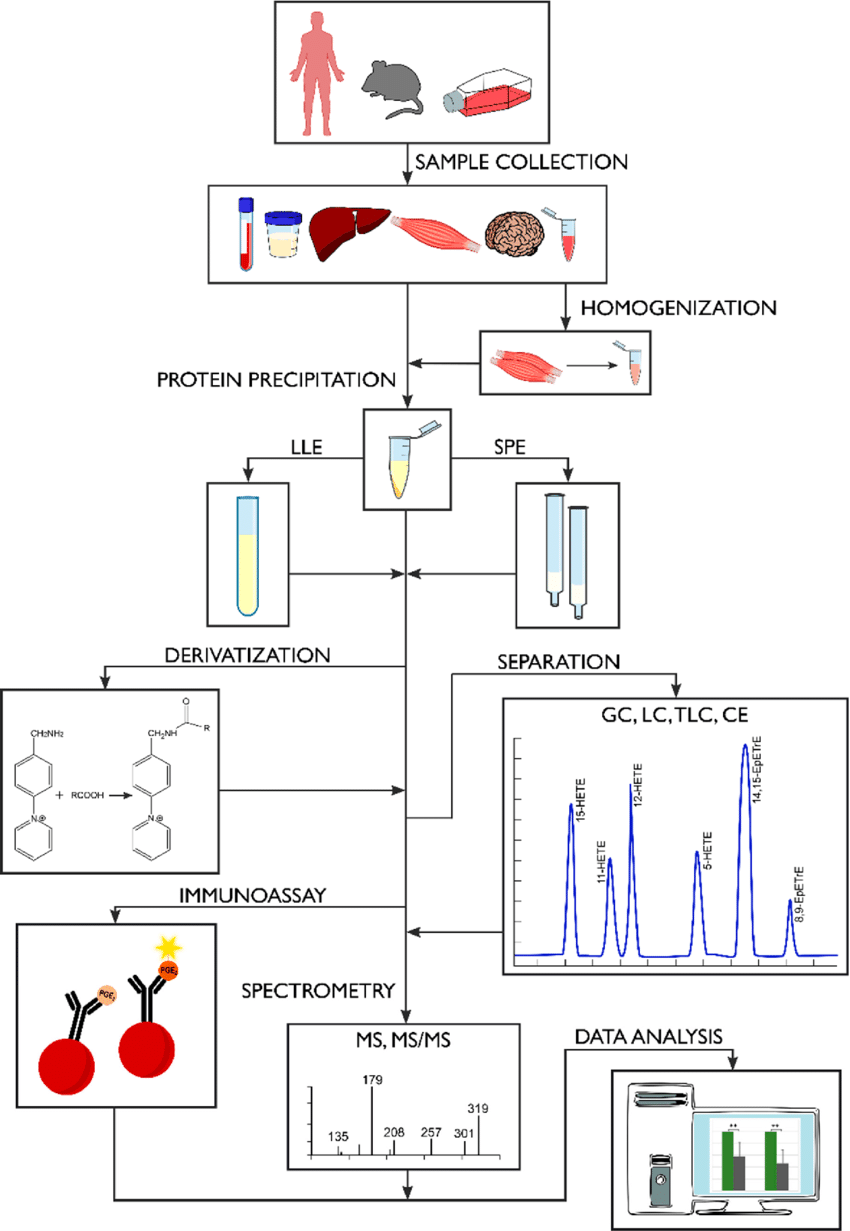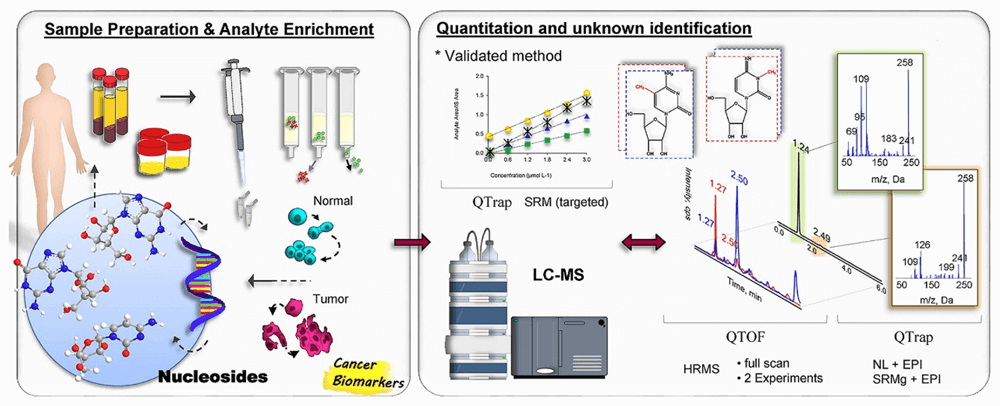Oxidized lipid metabolites play important regulatory roles in the life activities of organisms, such as the regulation of inflammatory responses, immune defense, endocrine regulation and oxidative stress, and are closely related to the development of many diseases, such as tumors, cardiovascular diseases, diabetes, endocrine and pulmonary diseases, Alzheimer's disease, urological diseases, gastrointestinal diseases, various skin diseases and allergies.
In disease model studies, the analysis of oxidized fatty acids and redox metabolites will help us to better understand their role in disease. Creative Proteomics can provide you with oxylipins and redox metabolites assays.
Types of metabolites that can be analyzed include but are not limited to
| Categories of metabolites | Specific metabolites |
| Oxylipins assay | Linoleic acid (LA), gamma-linolenic acid (GLA), dihomo-γ linolenic acid (DGLA), arachidonic acid (AA), alpha-linolenic acid (ALA), eicosapentaenoic acid (EPA) and docosahexaenoic acid (DHA) and their related metabolic pathway metabolites. |
| Redox metabolites assay | Reduced glutathione (GSH), oxidized glutathione (GSSG), reduced nicotinamide adenine dinucleotide (NADH, reduced coenzyme I), oxidized nicotinamide adenine dinucleotide (NAD+, oxidized coenzyme I), reduced nicotinamide adenine dinucleotide phosphate (NADPH, reduced coenzyme II), oxidized nicotinamide adenine dinucleotide phosphate (NADP+, oxidized coenzyme II), cysteine, cystine, glutamic acid, etc. |
 Scheme of the complete analytical procedure of oxylipins (Liakh et al., 2019).
Scheme of the complete analytical procedure of oxylipins (Liakh et al., 2019).
Technical advantages
- Standard + isotope internal standard
- Qualitative and absolute quantification of standards
- Dual validation of internal & external standards
Applications of oxylipins and redox metabolites analysis
- Disease research: used in various disease research such as cardiovascular, tumor, immune, endocrine, kidney disease, digestive system, nervous system, etc.
- Drug target studies: For example, aspirin plays a corresponding anti-platelet aggregation or anti-inflammatory role by inhibiting TXA2 or PGI2 in oxidized lipids.
- Disease biomarker screening: through the study of the difference between groups of oxidized lipids, screening disease biomarker, can be used for disease diagnosis, typing, prognosis and other research.
Sample requirements
1. Serum/plasma ≥ 240 ul/sample. Liquid nitrogen flash frozen and stored at -80°C.
2. Tissue/feces ≥ 200 mg/sample. Liquid nitrogen flash frozen and stored at -80°C.
3. Cells ≥ 1×107/sample. Liquid nitrogen snap frozen and stored at -80°C.
Send on dry ice to avoid repeated freezing and thawing. Try to avoid hemolysis. All samples for the oxidative lipid targeting assay should be stored in a sealed environment away from light.
Deliverables
- Experimental procedure
- Parameters of liquid chromatography / gas chromatography and MS
- MS raw data files and MS data quality checks
- Bioinformatics analysis report
Turnaround time: 1-4 weeks
Creative Proteomics will work with you to customize a solution to meet the specific needs of any project. If you would like to test for other metabolites that are not found, you can contact us and one of our technicians will communicate with you.
Reference
- Liakh, I., Pakiet, A., et al. (2019). Modern methods of sample preparation for the analysis of oxylipins in biological samples. Molecules, 24(8), 1639.
For Research Use Only. Not for use in diagnostic procedures.


 Scheme of the complete analytical procedure of oxylipins (Liakh et al., 2019).
Scheme of the complete analytical procedure of oxylipins (Liakh et al., 2019).



